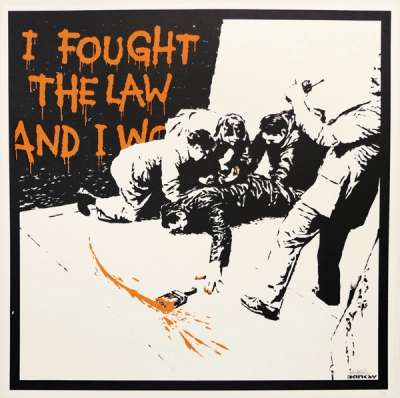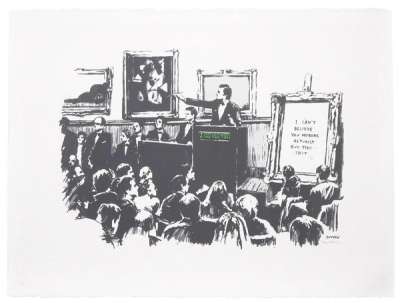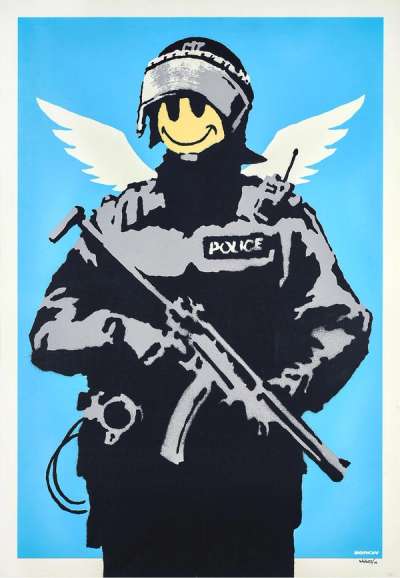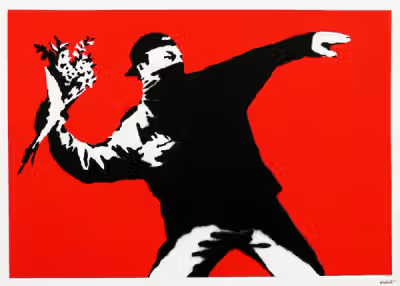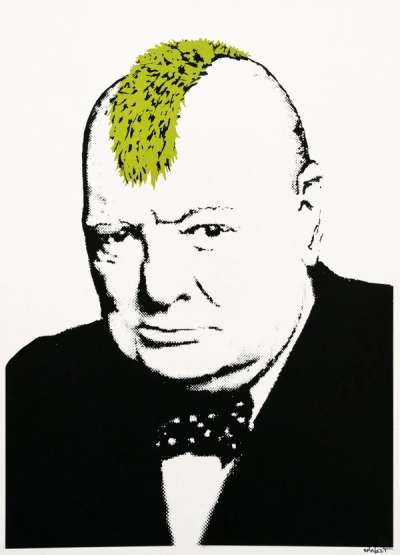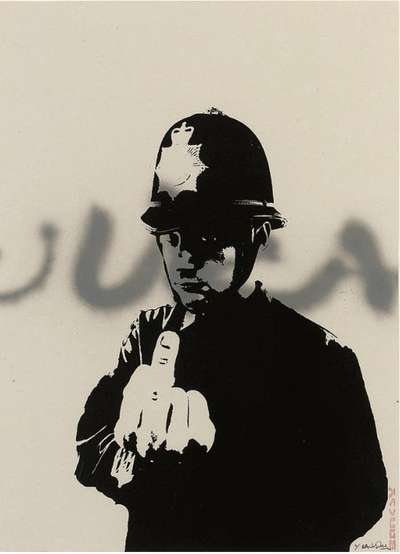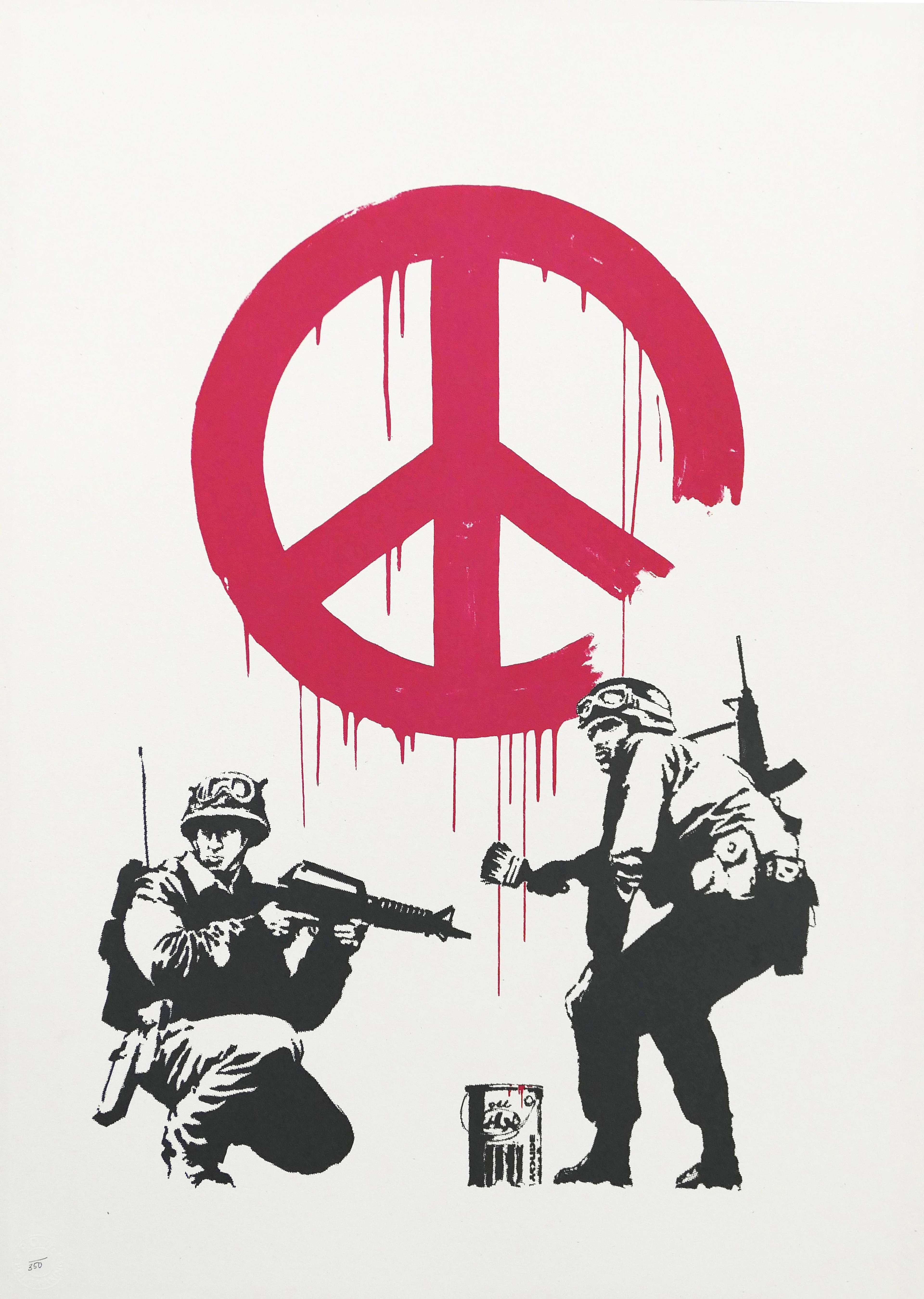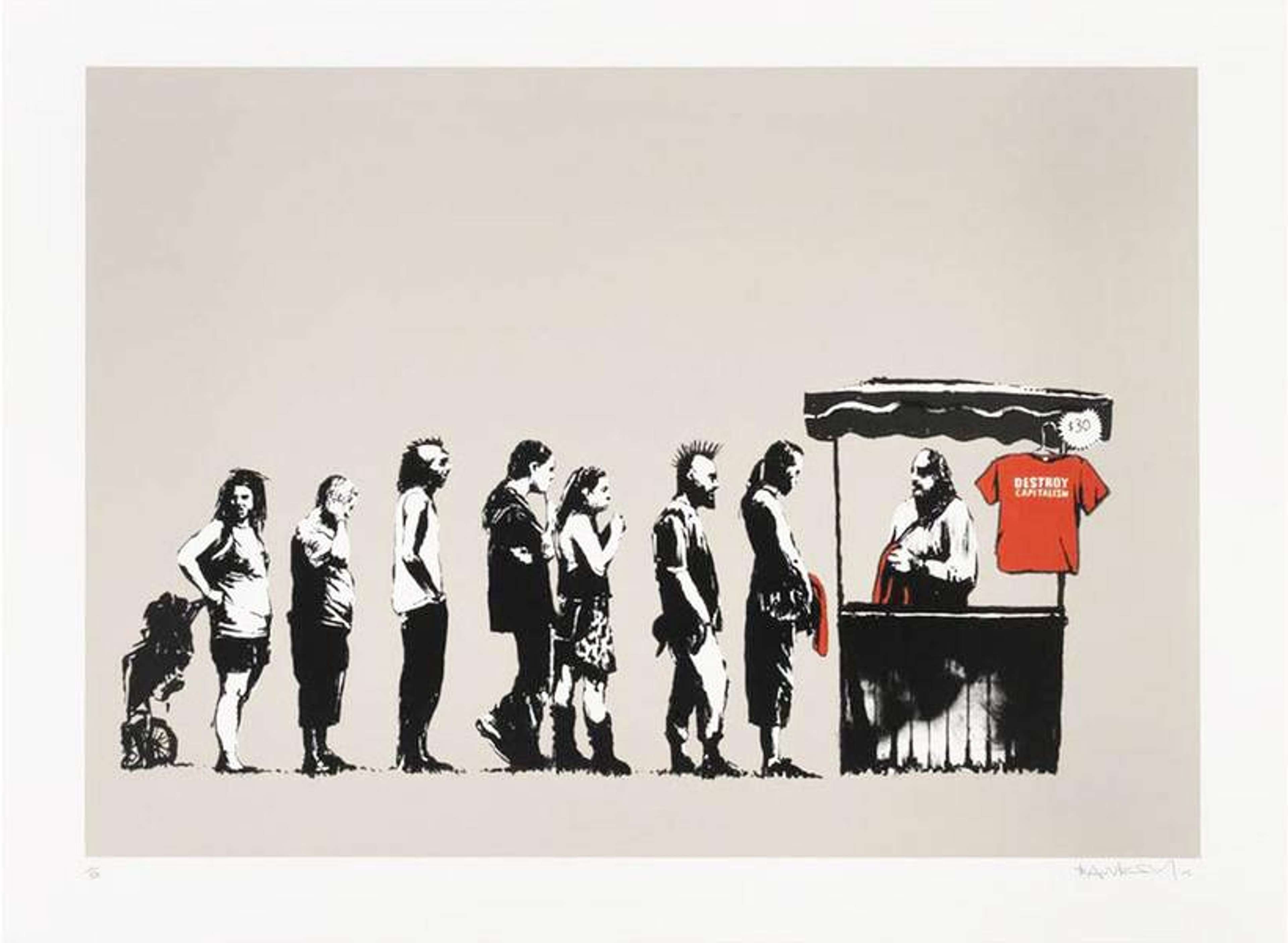10 Facts About Banksy's Turf War
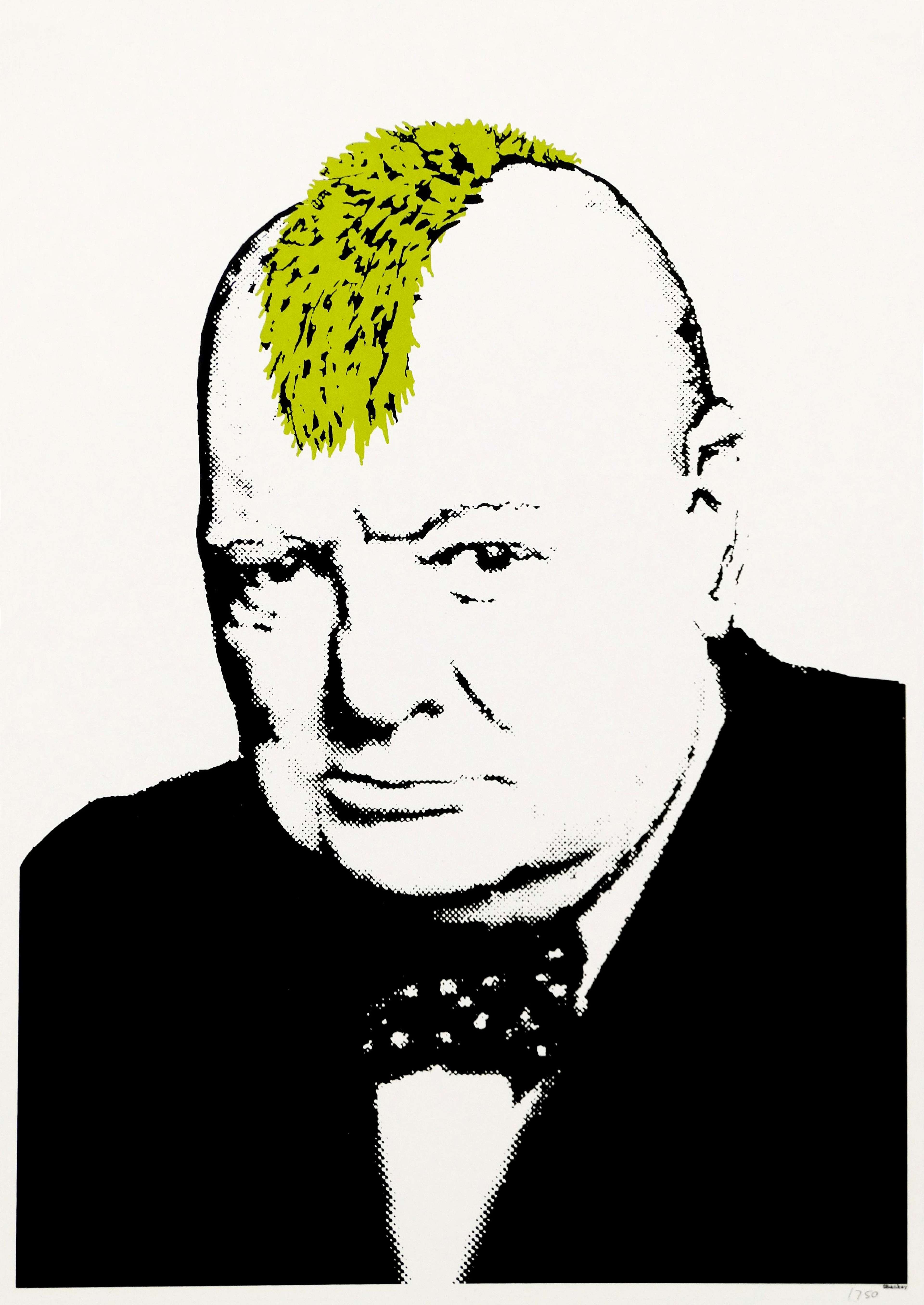 Turf War © Bansky 2003
Turf War © Bansky 2003
Banksy
266 works
A playful but typically subversive portrait of the 'British Bulldog' ex-prime minister Winston Churchill, this Banksy print was first shown at the eponymously titled Turf War exhibition. The exhibition, which was held in a Dalston warehouse in 2003, was seminal as the first major Banksy exhibition (to learn more about Banksy's exhibitions, click here). Alongside Turf War, the exhibition featured live farmyard animals—two sheep, two pigs, and a bull—all painted in various fashions, and causing quite a stir. It is no surprise, given the notoriety of the exhibition by the same name, that the prints of Turf War, released shortly after the exhibition's close, have become a recognisable classic of Banksy's oeuvre.
What does Banksy’s Turf War depict?
 Turf War © Banksy 2003
Turf War © Banksy 2003Turf War is executed in Banksy’s signature stencilled style, predominantly in black and white. In place of Churchill’s hair is a lime green Mohican, which appears to be made from turfed grass. With this simple swap, Banksy transforms Churchill from a political leader into a punk rock rebel.
What is the relevance of the title ‘Turf War’?
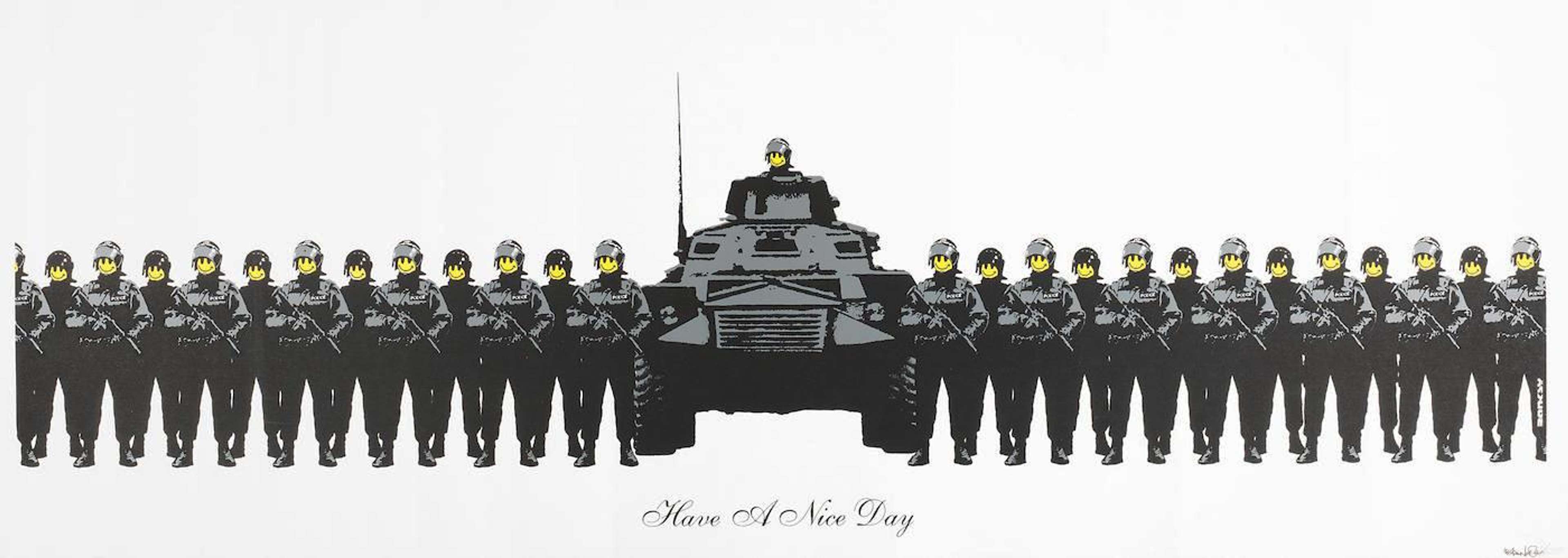 Have A Nice Day © Banksy 2003
Have A Nice Day © Banksy 2003The expression ‘Turf War’ relates to a battle over territory, the implication being that the dispute is unlawful. The Collins English Dictionary defines ‘Turf War’ as a struggle between criminals or gangs.
Churchill was a political leader and the UK Prime Minister for much of the Second World War, which was, in many ways, a dispute over ownership of land: a defensive battle on the part of the allies to preserve what was their ‘turf’.
The artwork's reference to the act of protestors at the 2000 May Day demonstration, before things turned ugly— the turf which was placed on the head of Churchill's statue in Parliament Square—suggests that Banksy uses 'Turf Wars' to describe more than just the territorial disputes of war, however. Banksy is well-known for his anti-authoritarian sentiments, including his ambivalence towards the police. Paying homage to the actions of May Day demonstrators, he also satirises the struggles that take place between protestors, whether mass demonstrators or lone grafitti artists protesting clandestinely through their art, and the police.
What is the message behind Turf War?
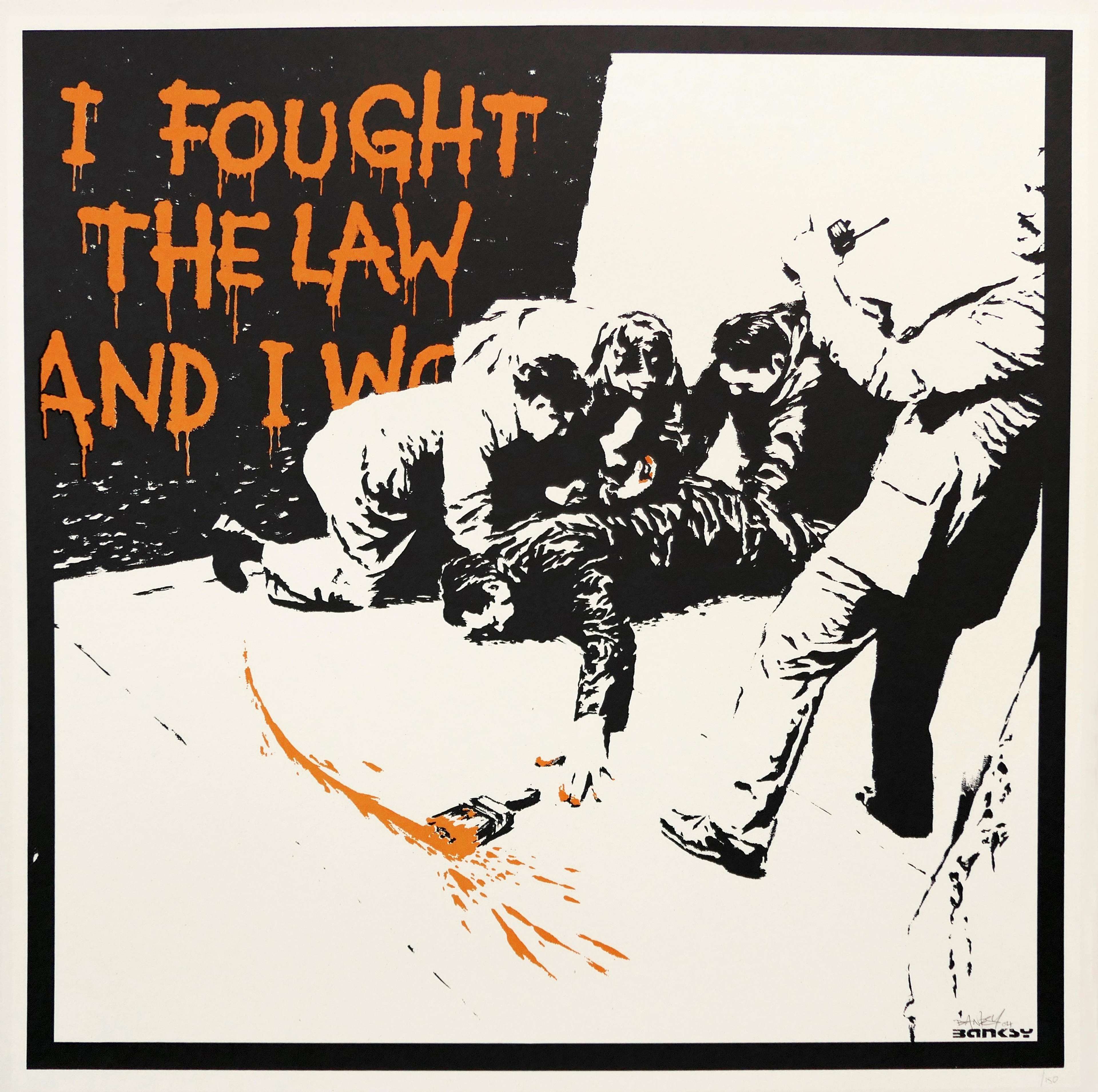 I Fought The Law (yellow) © Banksy 2003
I Fought The Law (yellow) © Banksy 2003The title of this artwork and the turf Mohican on Churchill’s head call into question the Prime Minister’s power and authority. Indeed, this is by no means a tribute to the late Churchill, rather a denouncement of the battles for borders and territory that characterised 20th and 21st century politics - at great cost to the lives of civilians.
Banksy‘s former printer, Pictures on Walls, has described the work as “The original thug immortalised here is the moment the turf was placed on the statue of the big man during London’s May Day riots. Arguably the best piece of vandalism this country has seen for over a decade”.
null
"arguably the best piece of vandalism this country has seen for over a decade..."
null
Where else has Banksy created anti-war images?
 Love Is In The Air (flower thrower) © Banksy 2003
Love Is In The Air (flower thrower) © Banksy 2003Anti-war messages have remained prominent throughout Banksy’s career, and in May 2001, Banksy held an unofficial exhibition of his work in a tunnel on Rivington Street, London, following a bet with a group of friends.
He produced 12 stencils for the show, each one with an overt anti-war message, including monkeys with guns, bombs over Big Ben, army tanks next to playing children, and a version of the now-famous Love Is In The Air (flower thrower).
Where did the original image of Churchill come from?
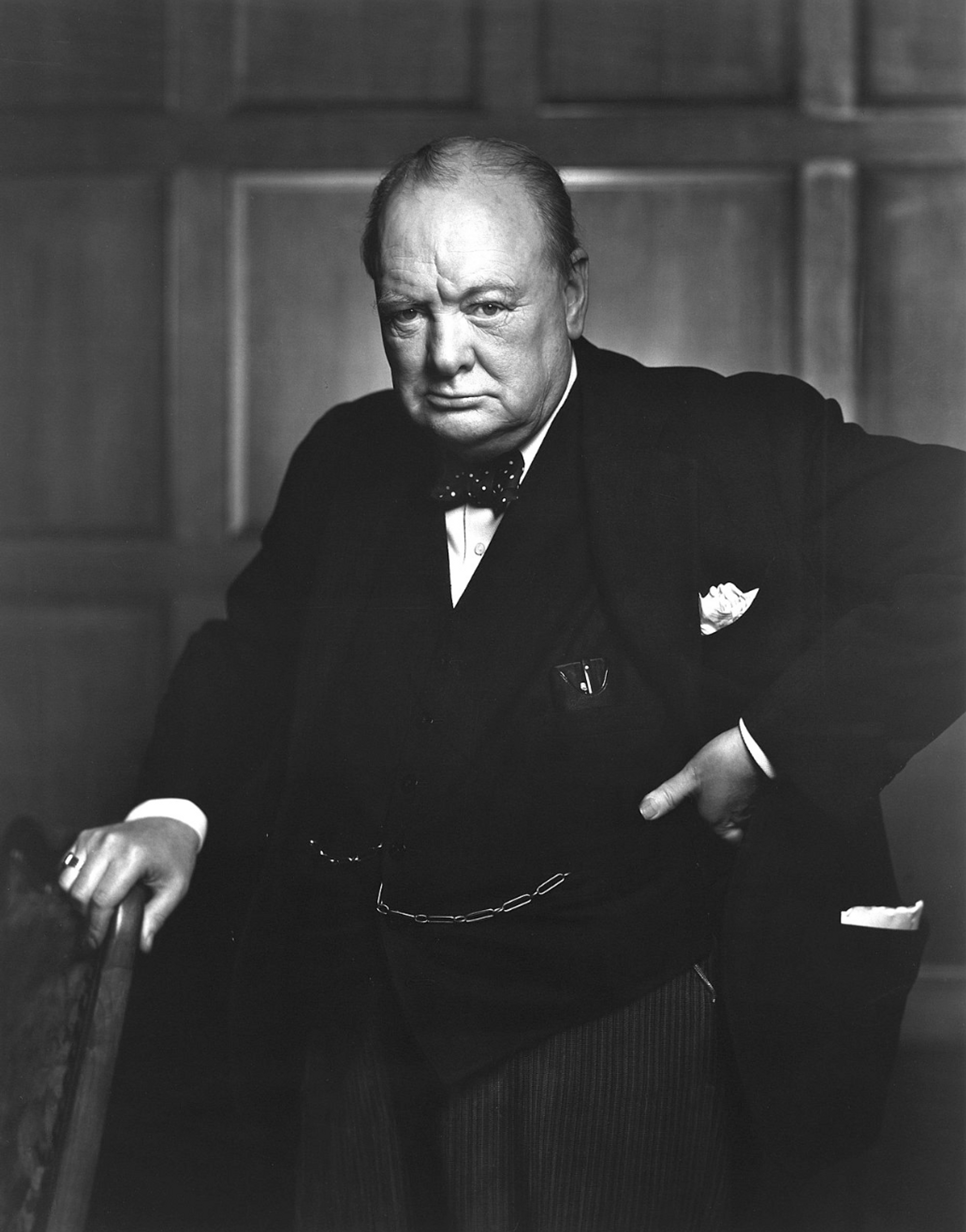 Image © cstm-mstc / The Roaring Lion © Yousuf Karsh 1941
Image © cstm-mstc / The Roaring Lion © Yousuf Karsh 1941Banksy’s Turf War is based on a photograph of Winston Churchill, known as The Roaring Lion. The image was captured by American-Canadian photographer Yousuf Karsh in 1941, shortly after Churchill had made a speech about World War Two at the House of Commons in the Canadian Parliament in Ottowa.
Churchill’s expression and posture have been said to represent the resilience and persistence of the British during the war, but moments before the photograph was taken Karsh had whipped a smoking cigar out of Churchill’s hand. In reality, the scowl had been directed at the photographer.
How does Banksy feel about figures of authority?
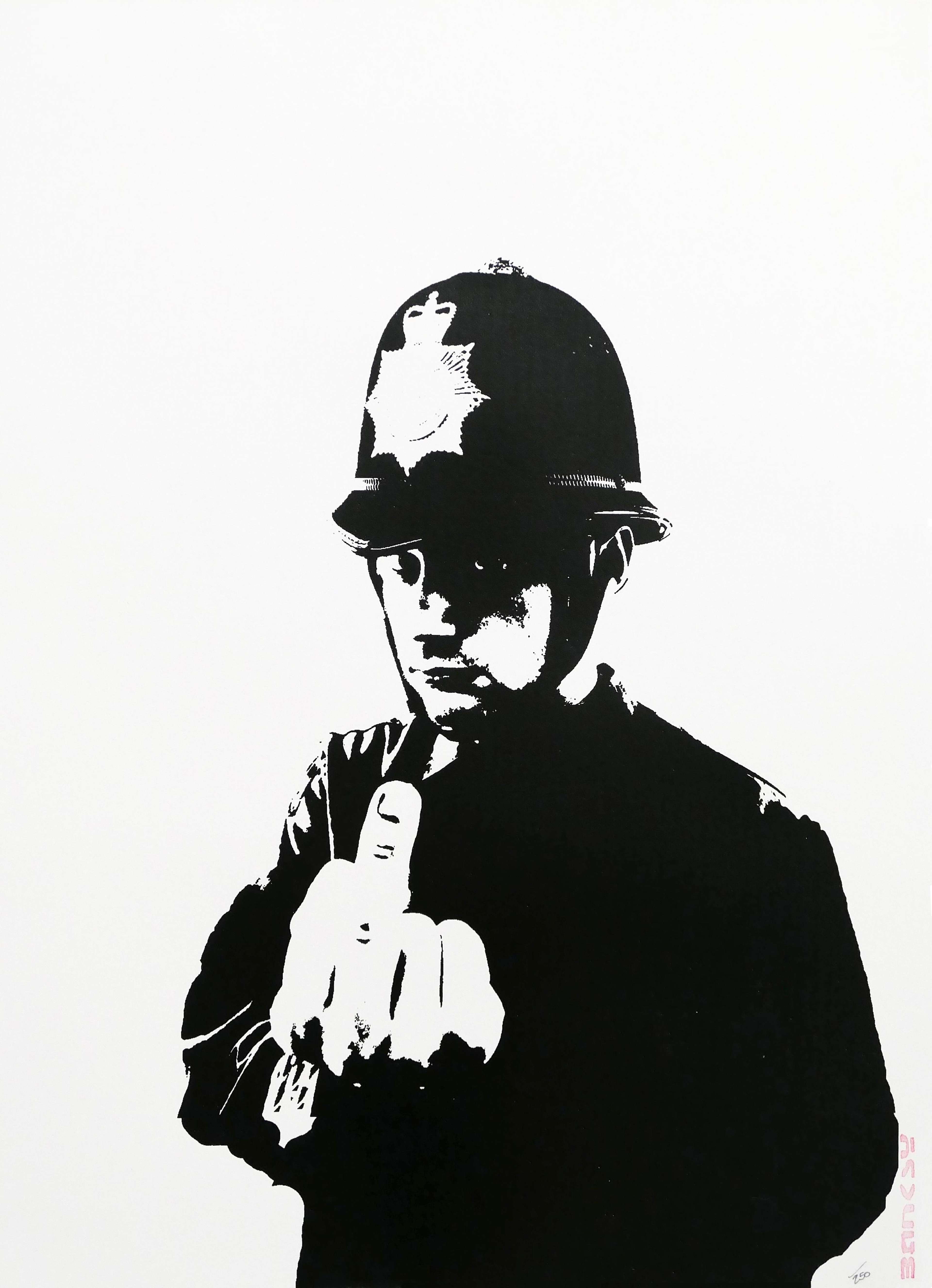 Rude Copper © Banksy 2002
Rude Copper © Banksy 2002Much of Banksy’s work is highly critical of figures of authority and regimes of power. In Turf War Banksy mocks Churchill, defacing his image by changing his hair. Banksy regularly makes bold statements through his artwork, these are often political or directed at other authoritative bodies such as the royal family, police or military.
Where else does Banksy criticise authority?
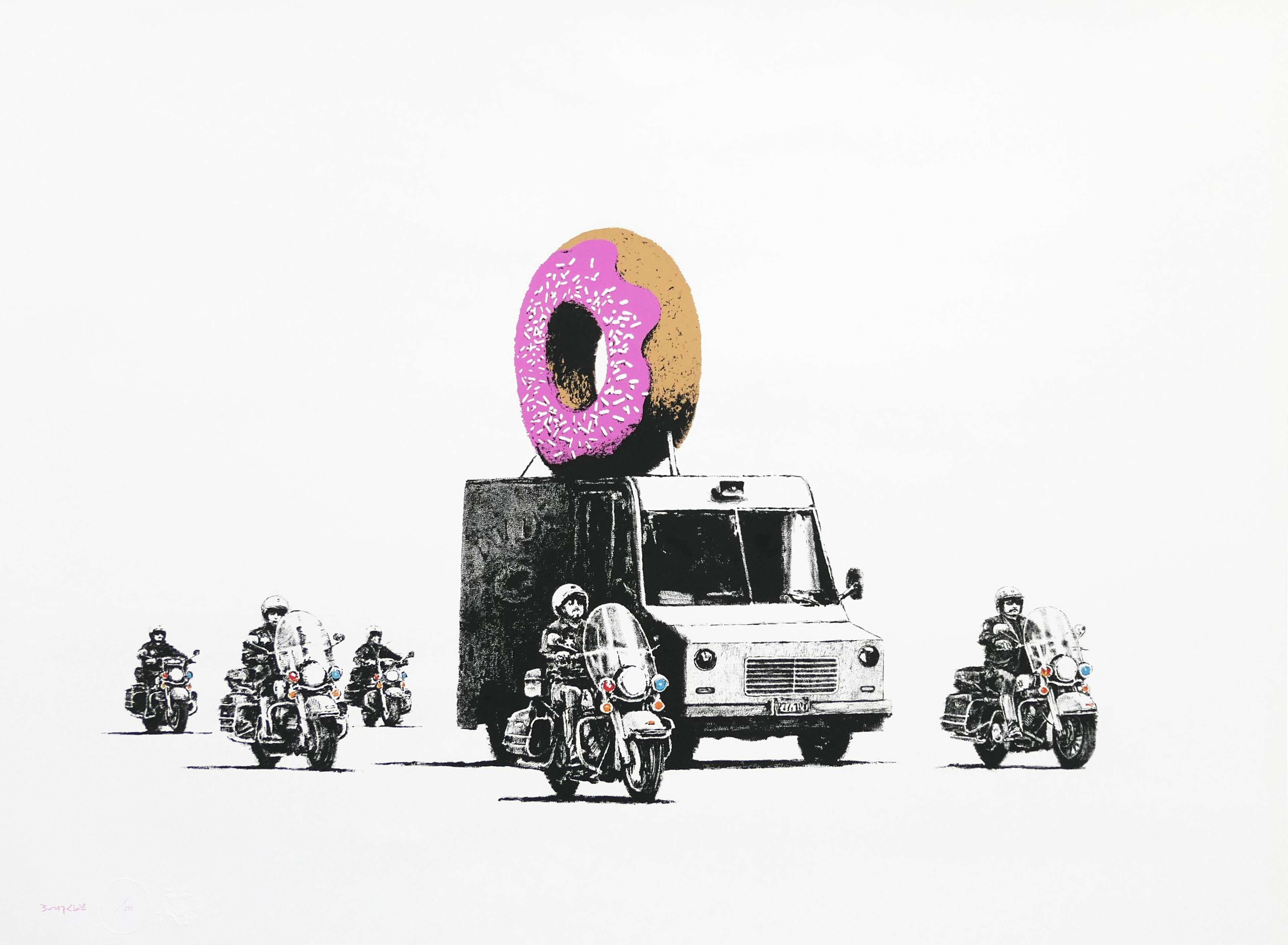 Donuts (strawberry) © Banksy 2003
Donuts (strawberry) © Banksy 2003In his 2009 artwork Donuts Banksy shows a motorcade of five American police officers on motorcycles and a police van. On top of the van is an oversized doughnut – representative of an unflattering stereotype: the lazy, coffee and doughnut guzzling police officer. The image was created soon after the financial troubles of 2007, and is thought to show the American police’s warped priorities, choosing to protect their beloved doughnut rather than fight real crime.
Similarly, in his 2003 Turf War exhibition, Banksy displayed a police van defaced with images of pigs.
Where did Banksy’s Turf War first appear?
 Flying Copper © Banksy 2003
Flying Copper © Banksy 2003Turf War first appeared in Banksy’s 2003 exhibition of the same name. The show was held in an East London Warehouse, and remained open for just two days before being shut down by the police. Other artworks, which have since been released as prints, shown in the exhibition included Monkey Queen, and Toxic Mary feeding an infant Jesus from a bottle marked poison.
The original painting was hung from the ceiling, surrounded by the artist’s well known Flying Coppers – the image of a figure in police uniform, with wings and a yellow ‘smiley’ for a face – sprayed onto cardboard.
How large was the limited edition of Banksy's Turf War?
 Turf War © Banksy 2003
Turf War © Banksy 2003Banksy released Turf War as a limited edition of screenprints on wove paper, measuring 50cm x 35cm, with only 150 signed screen prints, and 600 unsigned prints.
What is the highest price paid for an edition of Turf War?
 Morons © Banksy 2007
Morons © Banksy 2007In October 2020 a signed edition of Turf War sold for £112,560.

